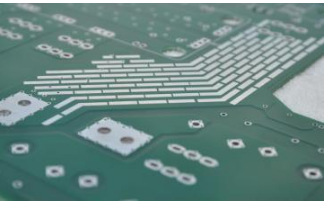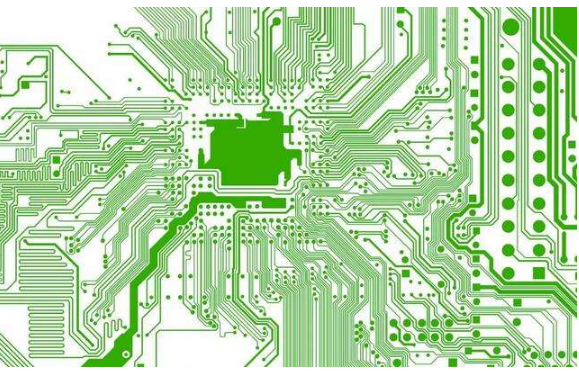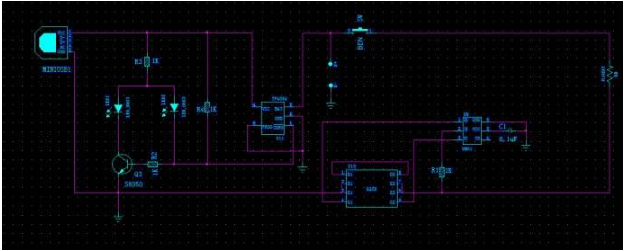
Pcb multilayer board is a special kind of printed circuit board, and its place of existence is generally special. for example, there will be pcb multilayer boards in the circuit board, which can help the machine to conduct various circuits. Not only that, but also can play an insulating effect, so that electricity will not collide with each other, and it is absolutely safe. If you want to use a pcb multilayer board with good performance, you must carefully design it. Next, we will explain how to design pcb multilayer boards.
PCB multilayer board design:
1、 Determination of board shape, size and number of layers 1. Any printed board has the problem of matching with other structural parts. Therefore, the shape and size of the printed board must be based on the overall structure of the product. However, from the perspective of production technology, it should be as simple as possible. Generally, it is a rectangle with a small ratio of length to width, which is conducive to improving production efficiency and reducing labor costs.

2. The number of layers must be determined according to the requirements of circuit performance, board size and circuit density. For multilayer printed boards, four layer boards and six layer boards are the most widely used. For example, four layer boards are two wire layers (component surface and welding surface), one power layer and one layer.
3. Each layer of the multilayer board shall be symmetrical, and it is better to have an even number of copper layers, that is, four, six and eight layers. Because of the asymmetric lamination, the board surface is prone to warp, especially for surface mounted multilayer boards, which should be paid more attention.
2、 Location and placement direction of components 1. The location and placement direction of components should first be considered from the circuit principle to meet the trend of the circuit. Whether the placement is reasonable or not will directly affect the performance of the printed circuit board, especially the high-frequency analog circuit, which has more stringent requirements on the location and placement of devices.
2. The reasonable placement of components, in a sense, indicates the success of the PCB design. Therefore, when preparing the layout of printed boards and deciding the overall layout, the circuit principle should be analyzed in detail, and the location of special components (such as large-scale IC, high-power tubes, signal sources, etc.) should be determined first, and then other components should be arranged to avoid possible interference factors.
3. On the other hand, the overall structure of the printed board should be considered to avoid uneven arrangement of components and parts. This not only affects the aesthetics of printed boards, but also brings a lot of inconvenience to assembly and maintenance.
3、 Requirements for wire layout and wiring area In general, multi-layer PCB wiring is conducted according to circuit functions. When wiring in the outer layer, more wiring is required on the welding surface and less wiring is required on the component surface, which is conducive to PCB maintenance and troubleshooting. Thin, dense wires and signal wires susceptible to interference are usually arranged in the inner layer. Large area copper foil should be evenly distributed in the inner and outer layers, which will help to reduce the warpage of the plate and also enable a more uniform coating on the surface during electroplating. In order to prevent the appearance processing from damaging the printed wire and causing interlayer short circuit during machining, the distance between the conductive pattern in the inner and outer wiring areas and the board edge shall be greater than 50mil.
4、 Requirements for wire routing and line width: The power layer, stratum and signal layer shall be separated for multi-layer board routing to reduce interference between power, ground and signal. The lines of two adjacent layers of printed boards shall be as perpendicular to each other as possible or take oblique lines and curves instead of parallel lines to reduce the interlayer coupling and interference of the substrate. And the wire should be short as far as possible. Especially for small signal circuits, the shorter the wire, the smaller the resistance and the smaller the interference. For signal lines on the same layer, sharp corners shall be avoided when changing direction. The width of the conductor shall be determined according to the current and impedance requirements of the circuit. The power input line shall be larger and the signal line may be smaller. For general digital boards, the line width of power input line can be 50~80mil, and that of signal line can be 6~10mil.
Conductor width: 0.5, 1, 0, 1.5, 2.0; Allowable current: 0.8, 2.0, 2.5, 1.9; Conductor resistance: 0.7, 0.41, 0.31, 0.25; During wiring, the width of lines shall be as consistent as possible to avoid sudden thickening and thinning of wires, which is conducive to impedance matching.
5、 Requirements for drill hole size and bonding pad 1. The drill hole size of components on the multilayer board is related to the pin size of the selected components. If the drill hole is too small, it will affect the assembly and tin of components; The drilling is too large, and the welding spot is not full enough during welding. In general, the calculation method of element hole diameter and pad size is:
2. Aperture of component hole=diameter of component pin (or diagonal)+(10-30mil) 3. Diameter of PCB component pad ≥ diameter of component hole+18mil 4. Aperture of through-hole is mainly determined by the thickness of finished board. For high-density multilayer board, it should generally be controlled within the range of plate thickness: aperture ≤ 5:1. The calculation method of via pad is:
5. Diameter of via pad (VIAPAD) ≥ via diameter+12mil.
6、 Requirements for power supply layer, stratum partition and perforated holes For multilayer printed boards, there should be at least one power supply layer and one stratum. Since all the voltages on the printed board are connected to the same power layer, the power layer must be isolated by zones. The size of the zone line is generally 20~80 mil wide. The higher the voltage, the thicker the zone line.
In order to increase the reliability of PCB solder holes and the connection between PCB solder holes and power supply layer and stratum, and reduce the false soldering caused by large area of metal heat absorption during welding, generally the connecting plate should be designed in the shape of flower holes.
The hole diameter of the isolation pad ≥ the hole diameter+20mil VII. The setting of the safety distance shall meet the requirements of electrical safety. In general, the minimum distance between outer conductors shall not be less than 4mil, and the minimum distance between inner conductors shall not be less than 4mil. If the wiring can be arranged, the spacing should be as large as possible to improve the yield of the finished board and reduce the hidden trouble of the finished board.
8、 Requirements for improving the anti-interference capability of the whole board The design of multilayer printed boards must also pay attention to the anti-interference capability of the whole board. The general methods are:
a. Add a filter capacitor near the power supply and ground of each IC, and the capacity is generally 473 or 104.
b. For the sensitive signals on the printed PCB board, the accompanying shielded wires shall be added separately, and the wiring near the signal source shall be minimized.
c. Select a reasonable grounding point.
The design method of pcb multilayer board must have been known, but we do not know what the parameters of this multilayer board are. The minimum hole diameter of the PCB multilayer board is generally 0.4 mm, which is a necessary design. When designing the PCB multilayer board, we must adjust its thickness and size to the range suitable for the use of electrical appliances. It is not good if it is too large or too small. When conducting surface treatment, you must choose the way of electrogilding, otherwise the insulation characteristics may disappear.







